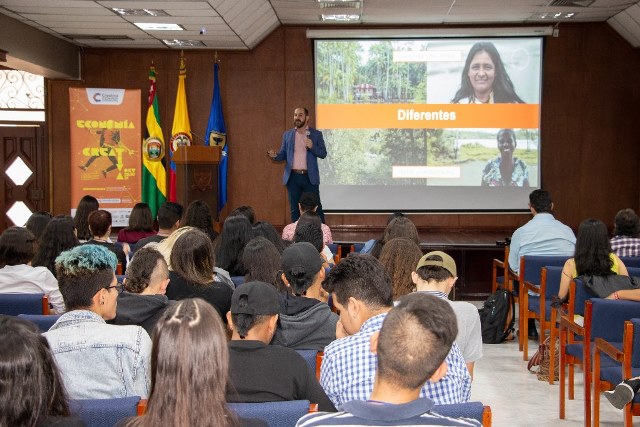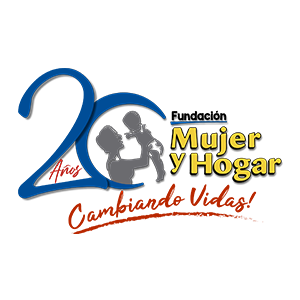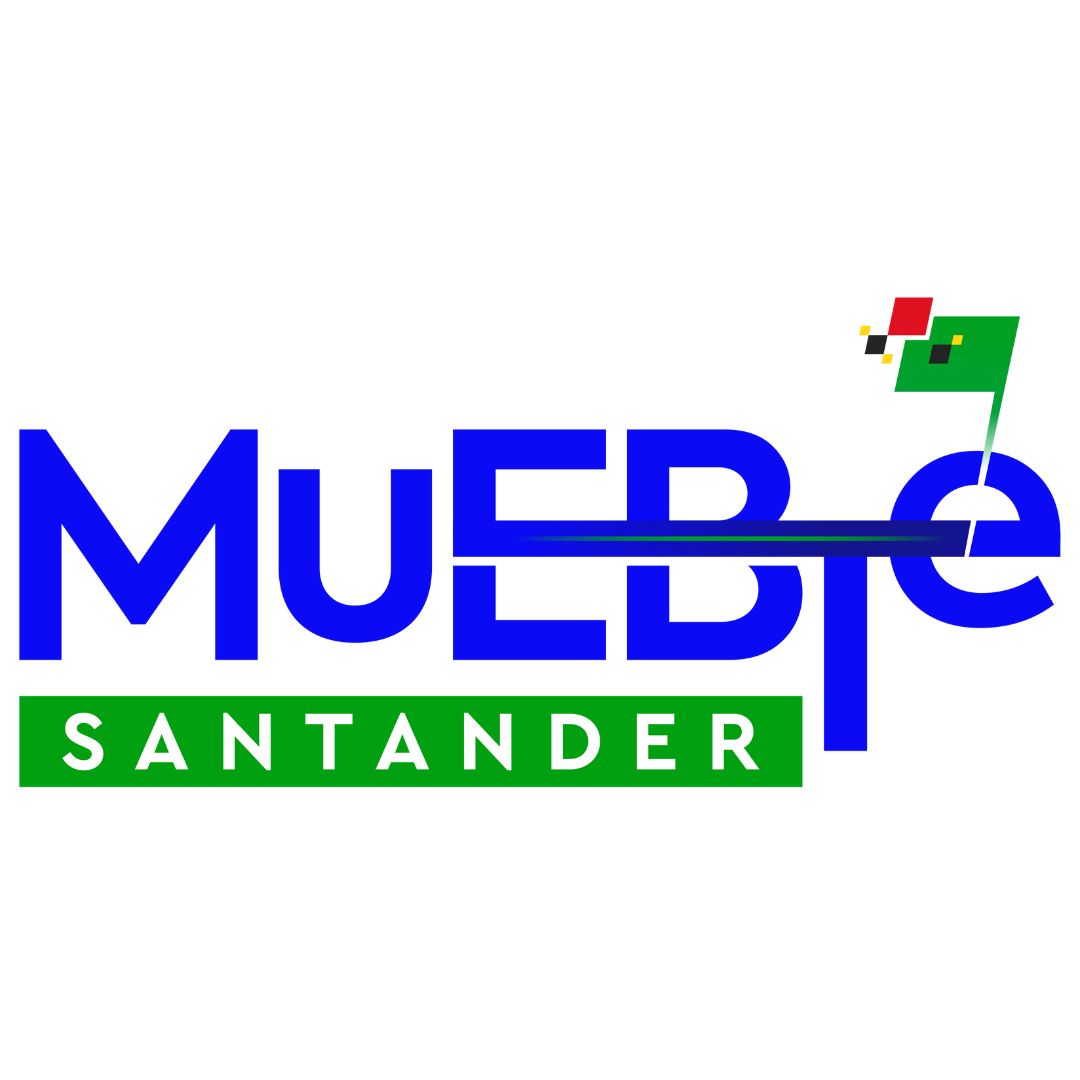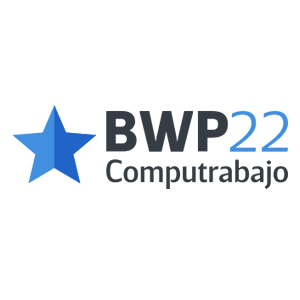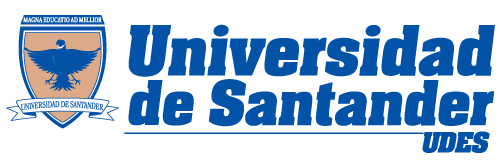LA UDES PUBLICA
- Fecha de publicación:
- 2022-01-01
- Tipo:
- Conference Paper
- Identificación:
- SCOPUS_ID:85132948783
- eID:
- 2-s2.0-85132948783
- Nombre de la revista:
- Green Energy and Technology
- Autor(es) UDES:
- Posso F.
- Otros Autores:
- Galeano M., Baranda C., Franco D., Rincón Á., Zambrano J.
- Autor Principal:
- Posso F.
- Áreas del conocimiento:
- Renewable Energy, Sustainability and the Environment, Energy Engineering and Power Technology, Industrial and Manufacturing Engineering, Management, Monitoring, Policy and Law
- Tipo
- Book Series
- ISSN
- 18653529
- eISSN
- 18653537
- Rango de páginas
- 77-87
- Fecha de publicación:
- 2022-01-01
- Tipo:
- Article
- Identificación:
- SCOPUS_ID:85132742095
- eID:
- 2-s2.0-85132742095
- Nombre de la revista:
- Journal of Applied Research and Technology
- Autor(es) UDES:
- Cáceres-Gelvez S.
- Otros Autores:
- Arango-Serna M.D., Zapata-Cortés J.A.
- Autor Principal:
- Cáceres-Gelvez S.
- Áreas del conocimiento:
- Engineering (all)
Cuartil
Q4
- Ranking
- 19193
- Tipo
- Journal
- ISSN
- 16656423
- eISSN
- 24486736
- Región
- Latin America
- País
- Mexico
- Volumen
- 20
- Rango de páginas
- 68-83
- Cobertura
- 2008-2022
- Fecha de publicación:
- 2022-01-01
- Tipo:
- Article
- Identificación:
- SCOPUS_ID:85132345905
- eID:
- 2-s2.0-85132345905
- Nombre de la revista:
- Journal of Substance Use
- Autor(es) UDES:
- Cassiani-Miranda C.A., Cabanzo-Arenas D.F.
- Otros Autores:
- Scoppetta O., Quintero-Gómez T.C., Arraut-Camargo E., Castaño-Pérez G., Campo-Arias A.
- Autor Principal:
- Cassiani-Miranda C.A.
- Áreas del conocimiento:
- Health (social science), Medicine (miscellaneous)
Cuartil
Q3
- Ranking
- 15101
- Tipo
- Journal
- ISSN
- 14659891
- eISSN
- 14759942
- Región
- Western Europe
- País
- United Kingdom
- Cobertura
- 1996-2022
- Fecha de publicación:
- 2022-01-01
- Tipo:
- Article
- Identificación:
- SCOPUS_ID:85132131361
- eID:
- 2-s2.0-85132131361
- Nombre de la revista:
- Revista de saude publica
- Autor(es) UDES:
- Páez-Esteban A.N., Esquiaqui-Felipe R.E.
- Otros Autores:
- Rivera-Carvajal R., Torres-Contreras C.C., González N.R., Mejía-Muñoz C.C.
- Autor Principal:
- Rivera-Carvajal R.
- Áreas del conocimiento:
- Public Health, Environmental and Occupational Health
- Tipo
- Journal
- eISSN
- 15188787
- Volumen
- 56
- Rango de páginas
- 47
- Fecha de publicación:
- 2022-01-01
- Tipo:
- Article
- Identificación:
- SCOPUS_ID:85131422844
- eID:
- 2-s2.0-85131422844
- Nombre de la revista:
- International Journal of Hydrogen Energy
- Autor(es) UDES:
- Posso F., Pulido A., Acevedo-Páez J.C.
- Autor Principal:
- Posso F.
- Áreas del conocimiento:
- Renewable Energy, Sustainability and the Environment, Fuel Technology, Condensed Matter Physics, Energy Engineering and Power Technology
Cuartil
Q1
- Ranking
- 2655
- Tipo
- Journal
- ISSN
- 03603199
- Región
- Western Europe
- País
- United Kingdom
- Cobertura
- 1976-2022
- Fecha de publicación:
- 2022-01-01
- Tipo:
- Article
- Identificación:
- SCOPUS_ID:85130482067
- eID:
- 2-s2.0-85130482067
- Nombre de la revista:
- Check List
- Autor(es) UDES:
- Olarte-Castillo X.A., Antolínez C.A.
- Autor Principal:
- Olarte-Castillo X.A.
- Áreas del conocimiento:
- Ecology, Evolution, Behavior and Systematics, Ecology, Animal Science and Zoology, Plant Science, Insect Science
Cuartil
Q3
- Ranking
- 16784
- Tipo
- Journal
- eISSN
- 1809127X
- Región
- Latin America
- País
- Brazil
- Volumen
- 18
- Rango de páginas
- 469-474
- Cobertura
- 2010-2022
- Fecha de publicación:
- 2022-01-01
- Tipo:
- Article
- Identificación:
- SCOPUS_ID:85130467063
- eID:
- 2-s2.0-85130467063
- Nombre de la revista:
- Health Care for Women International
- Autor(es) UDES:
- Angarita-Fonseca A., Villamizar García M.C., Sánchez-Delgado J.C.
- Otros Autores:
- VillamizarPita P.C., de Souza H.C.D., Martínez-Rueda R.
- Autor Principal:
- VillamizarPita P.C.
- Áreas del conocimiento:
- Health Professions (all)
Cuartil
Q2
- Ranking
- 9226
- Tipo
- Journal
- ISSN
- 07399332
- eISSN
- 10964665
- Región
- Western Europe
- País
- United Kingdom
- Cobertura
- 1984-2022
- Fecha de publicación:
- 2022-01-01
- Tipo:
- Article
- Identificación:
- SCOPUS_ID:85130165734
- eID:
- 2-s2.0-85130165734
- Nombre de la revista:
- Bioagro
- Autor(es) UDES:
- Ortiz Meneses F.A., Guerra Sierra B.E., Osorio Alvarado C.E.
- Otros Autores:
- Rodríguez González L.G.
- Autor Principal:
- Ortiz Meneses F.A.
- Áreas del conocimiento:
- Agricultural and Biological Sciences (all)
Cuartil
Q3
- Ranking
- 18920
- Tipo
- Journal
- ISSN
- 13163361
- Región
- Latin America
- País
- Venezuela
- Volumen
- 34
- Rango de páginas
- 173-182
- Cobertura
- 2008-2022
- Fecha de publicación:
- 2022-01-01
- Tipo:
- Article
- Identificación:
- SCOPUS_ID:85129734379
- eID:
- 2-s2.0-85129734379
- Nombre de la revista:
- Revista de Biologia Tropical
- Autor(es) UDES:
- Santos-Heredia C.
- Otros Autores:
- Arias-álvarez G.A., Vanegas-Alarcón D.A., García-Hernández A.L., Andresen E.
- Autor Principal:
- Arias-álvarez G.A.
- Áreas del conocimiento:
- Agricultural and Biological Sciences (all)
Cuartil
Q2
- Ranking
- 15814
- Tipo
- Journal
- ISSN
- 00347744
- eISSN
- 22152075
- Región
- Latin America
- País
- Costa Rica
- Volumen
- 70
- Rango de páginas
- 53-66
- Cobertura
- 1969-2022
- Fecha de publicación:
- 2022-01-01
- Tipo:
- Article
- Identificación:
- SCOPUS_ID:85127670127
- eID:
- 2-s2.0-85127670127
- Nombre de la revista:
- Iatreia
- Autor(es) UDES:
- Jácome-Hortua A.M.
- Otros Autores:
- Muñoz-Robles S.C., Gonzáles H.L.
- Autor Principal:
- Jácome-Hortua A.M.
- Áreas del conocimiento:
- Medicine (all)
Cuartil
Q4
- Ranking
- 24856
- Tipo
- Journal
- ISSN
- 01210793
- Región
- Latin America
- País
- Colombia
- Volumen
- 35
- Rango de páginas
- 48-56
- Cobertura
- 1988-2022
- Fecha de publicación:
- 2022-01-01
- Tipo:
- Article
- Número de artículo:
- e4065
- Identificación:
- SCOPUS_ID:85127625090
- eID:
- 2-s2.0-85127625090
- Nombre de la revista:
- Revista Cubana de Enfermeria
- Autor(es) UDES:
- Ardila A.C., Gómez M.A.B., Carvajal R.R.
- Autor Principal:
- Ardila A.C.
- Áreas del conocimiento:
- Nursing (all)
- Tipo
- Journal
- eISSN
- 15612961
- Volumen
- 38
- Fecha de publicación:
- 2022-01-01
- Tipo:
- Article
- Número de artículo:
- e12012
- Identificación:
- SCOPUS_ID:85127249722
- eID:
- 2-s2.0-85127249722
- Nombre de la revista:
- Pulmonary Circulation
- Autor(es) UDES:
- Orozco-Levi M.
- Otros Autores:
- Cáneva J., Fernandes C., Restrepo-Jaramillo R., Zayas N., Conde R., Diez M., Jardim C., Pacheco Gallego M.C., Melatini L., Valdéz H., Pulido T.
- Autor Principal:
- Orozco-Levi M.
- Áreas del conocimiento:
- Pulmonary and Respiratory Medicine
Cuartil
Q2
- Ranking
- 5852
- Tipo
- Journal
- ISSN
- 20458932
- eISSN
- 20458940
- Región
- Northern America
- País
- United States
- Volumen
- 12
- Cobertura
- 2011-2022
- Fecha de publicación:
- 2022-01-01
- Tipo:
- Article
- Identificación:
- SCOPUS_ID:85126525282
- eID:
- 2-s2.0-85126525282
- Nombre de la revista:
- Antipoda
- Autor(es) UDES:
- Reyes M.J.G.
- Otros Autores:
- Cardona P.S.Q., Sepúlveda C.L.G.
- Autor Principal:
- Cardona P.S.Q.
- Áreas del conocimiento:
- Cultural Studies, Archeology (arts and humanities), Anthropology, Archeology
Cuartil
Q1
- Ranking
- 13202
- Tipo
- Journal
- ISSN
- 19005407
- eISSN
- 20114273
- Región
- Latin America
- País
- Colombia
- Volumen
- 2022
- Rango de páginas
- 204-234
- Cobertura
- 2013-2022
- Fecha de publicación:
- 2022-01-01
- Tipo:
- Article
- Identificación:
- SCOPUS_ID:85124711142
- eID:
- 2-s2.0-85124711142
- Nombre de la revista:
- International Journal of Veterinary Science
- Autor(es) UDES:
- Alberto F.M.A., Juanita T., Luis Q., Juan P.L.
- Otros Autores:
- Ariel R.M., Marcelo B.M.
- Autor Principal:
- Alberto F.M.A.
- Áreas del conocimiento:
- Veterinary (all)
Cuartil
Q3
- Ranking
- 17384
- Tipo
- Journal
- ISSN
- 23043075
- eISSN
- 23054360
- Región
- Asiatic Region
- País
- Pakistan
- Volumen
- 11
- Rango de páginas
- 175-182
- Cobertura
- 2017-2022
- Fecha de publicación:
- 2022-01-01
- Tipo:
- Article
- Identificación:
- SCOPUS_ID:85124314637
- eID:
- 2-s2.0-85124314637
- Nombre de la revista:
- Revista de Economia Institucional
- Autor(es) UDES:
- Merli G.O.
- Otros Autores:
- Perazzi J.R.
- Autor Principal:
- Perazzi J.R.
- Áreas del conocimiento:
- Economics, Econometrics and Finance (all)
Cuartil
Q4
- Ranking
- 22137
- Tipo
- Journal
- ISSN
- 01245996
- Región
- Latin America
- País
- Colombia
- Volumen
- 24
- Rango de páginas
- 115-132
- Cobertura
- 2009-2022
- Fecha de publicación:
- 2022-01-01
- Tipo:
- Article
- Identificación:
- SCOPUS_ID:85124220281
- eID:
- 2-s2.0-85124220281
- Nombre de la revista:
- International Journal of Veterinary Science
- Autor(es) UDES:
- Pinilla J.C., Florez A.A.
- Otros Autores:
- Gutierrez A.
- Autor Principal:
- Pinilla J.C.
- Áreas del conocimiento:
- Veterinary (all)
Cuartil
Q3
- Ranking
- 17384
- Tipo
- Journal
- ISSN
- 23043075
- eISSN
- 23054360
- Región
- Asiatic Region
- País
- Pakistan
- Volumen
- 11
- Rango de páginas
- 117-120
- Cobertura
- 2017-2022
- Fecha de publicación:
- 2022-01-01
- Tipo:
- Article
- Número de artículo:
- 100125
- Identificación:
- SCOPUS_ID:85123995988
- eID:
- 2-s2.0-85123995988
- Nombre de la revista:
- Atencion Primaria Practica
- Autor(es) UDES:
- Brilla M.F.G.
- Otros Autores:
- León J.S.T., Garcia C.F., Gutiérrez J.K.
- Autor Principal:
- León J.S.T.
- Áreas del conocimiento:
- Family Practice
Cuartil
Q4
- Ranking
- 25431
- Tipo
- Journal
- eISSN
- 26050730
- Región
- Western Europe
- País
- Spain
- Volumen
- 4
- Cobertura
- 2019-2022
- Fecha de publicación:
- 2022-01-01
- Tipo:
- Article
- Identificación:
- SCOPUS_ID:85123325418
- eID:
- 2-s2.0-85123325418
- Nombre de la revista:
- Archivos de Cardiologia de Mexico
- Autor(es) UDES:
- López-Jaramillo P.
- Otros Autores:
- Ponte-Negretti C.I., Wyss F.S., Piskorz D., Santos R.D., Villar R., Lorenzatti A., Toth P.P., Amaro A.J.J., Rodrigo A.K., Lanas F., Urina-Triana M., Lara J., Valdés T.O., Gomez-Mancebo J.R., Bryce A., Cobos S. L., Puente-Barragan A., Ullauri-Solórzano V.E., Medina-Palomino F.A., Lozada A.F., Duran M., Berrospi P., Miranda D., Badimon J.J., González J.J.R., Libby P.
- Autor Principal:
- Ponte-Negretti C.I.
- Áreas del conocimiento:
- Cardiology and Cardiovascular Medicine
Cuartil
Q4
- Ranking
- 23031
- Tipo
- Journal
- ISSN
- 14059940
- eISSN
- 16651731
- Región
- Latin America
- País
- Mexico
- Volumen
- 92
- Rango de páginas
- 99-112
- Cobertura
- 2001-2022
- Fecha de publicación:
- 2022-01-01
- Tipo:
- Article
- Identificación:
- SCOPUS_ID:85123087142
- eID:
- 2-s2.0-85123087142
- Nombre de la revista:
- International Journal of Mental Health and Addiction
- Autor(es) UDES:
- Cassiani-Miranda C.A., Arismendy-López Y.A.
- Otros Autores:
- Scoppetta O., Tirado-Otálvaro A.F.
- Autor Principal:
- Scoppetta O.
- Áreas del conocimiento:
- Psychiatry and Mental Health
- Tipo
- Journal
- ISSN
- 15571874
- eISSN
- 15571882
- Fecha de publicación:
- 2022-01-01
- Tipo:
- Article
- Número de artículo:
- e1006
- Identificación:
- SCOPUS_ID:85122576188
- eID:
- 2-s2.0-85122576188
- Nombre de la revista:
- Colombian Journal of Anesthesiology
- Autor(es) UDES:
- Contreras C.C.T., Carvajal R.R.
- Otros Autores:
- Robles S.Á., Ariza V.M.L., García S.M.V.
- Autor Principal:
- Robles S.Á.
- Áreas del conocimiento:
- Critical Care and Intensive Care Medicine, Anesthesiology and Pain Medicine
- Tipo
- Journal
- ISSN
- 22562087
- eISSN
- 24220248
- Volumen
- 50
- Fecha de publicación:
- 2022-01-01
- Tipo:
- Article
- Número de artículo:
- 51
- Identificación:
- SCOPUS_ID:85122302557
- eID:
- 2-s2.0-85122302557
- Nombre de la revista:
- Children
- Autor(es) UDES:
- Martínez-Bello D.A.
- Otros Autores:
- Vega-Perona H., Estevan I., García-Ochoa Y.C., Bernabé-Villodre M.D.M., Martínez-Bello V.E.
- Autor Principal:
- Vega-Perona H.
- Áreas del conocimiento:
- Pediatrics, Perinatology and Child Health
Cuartil
Q2
- Ranking
- 10260
- Tipo
- Journal
- eISSN
- 22279067
- Región
- Western Europe
- País
- Switzerland
- Volumen
- 9
- Cobertura
- 2014-2022
- Fecha de publicación:
- 2022-01-01
- Tipo:
- Article
- Identificación:
- SCOPUS_ID:85120951920
- eID:
- 2-s2.0-85120951920
- Nombre de la revista:
- Hypertension
- Autor(es) UDES:
- Lopez-Jaramillo P.
- Otros Autores:
- Al-Makki A., DiPette D., Whelton P.K., Murad M.H., Mustafa R.A., Acharya S., Beheiry H.M., Champagne B., Connell K., Cooney M.T., Ezeigwe N., Gaziano T.A., Gidio A., Khan U.I., Kumarapeli V., Moran A.E., Silwimba M.M., Rayner B., Sukonthasan A., Yu J., Saraffzadegan N., Reddy K.S., Khan T.
- Autor Principal:
- Al-Makki A.
- Áreas del conocimiento:
- Internal Medicine
Cuartil
Q1
- Ranking
- 728
- Tipo
- Journal
- ISSN
- 0194911X
- eISSN
- 15244563
- Región
- Northern America
- País
- United States
- Volumen
- 79
- Rango de páginas
- 293-301
- Cobertura
- 1979-2022
- Fecha de publicación:
- 2022-01-01
- Tipo:
- Article
- Identificación:
- SCOPUS_ID:85119927281
- eID:
- 2-s2.0-85119927281
- Nombre de la revista:
- Physical Therapy in Sport
- Autor(es) UDES:
- Cohen D.D.
- Otros Autores:
- Taberner M., Allen T., O\'keefe J.
- Autor Principal:
- Taberner M.
- Áreas del conocimiento:
- Orthopedics and Sports Medicine, Physical Therapy, Sports Therapy and Rehabilitation
Cuartil
Q1
- Ranking
- 5145
- Tipo
- Journal
- ISSN
- 1466853X
- eISSN
- 18731600
- Región
- Western Europe
- País
- Netherlands
- Volumen
- 53
- Rango de páginas
- 67-74
- Cobertura
- 2000-2022
- Fecha de publicación:
- 2022-01-01
- Tipo:
- Book Chapter
- Identificación:
- SCOPUS_ID:85118794635
- eID:
- 2-s2.0-85118794635
- Nombre de la revista:
- Methods in Molecular Biology
- Autor(es) UDES:
- Rondon-Villarreal P.
- Otros Autores:
- Cova T., Vitorino C., Ferreira M., Nunes S., Pais A.
- Autor Principal:
- Cova T.
- Áreas del conocimiento:
- Molecular Biology, Genetics
- Tipo
- Book Series
- ISSN
- 10643745
- eISSN
- 19406029
- Volumen
- 2390
- Rango de páginas
- 321-347
- Fecha de publicación:
- 2022-01-01
- Tipo:
- Article
- Número de artículo:
- 100114
- Identificación:
- SCOPUS_ID:85118714392
- eID:
- 2-s2.0-85118714392
- Nombre de la revista:
- Atencion Primaria Practica
- Autor(es) UDES:
- García Brilla M.F.
- Otros Autores:
- Theran León J.S., García C.F., Dulcey Sarmiento L.A.
- Autor Principal:
- Theran León J.S.
- Áreas del conocimiento:
- Family Practice
Cuartil
Q4
- Ranking
- 25431
- Tipo
- Journal
- eISSN
- 26050730
- Región
- Western Europe
- País
- Spain
- Volumen
- 4
- Cobertura
- 2019-2022
Bogotá
Cra. 14 N° 80-35
PBX: (+57) (601) 6914004
Línea Directa Interesados Programas: (601) 6914104
Horario de Atención: lunes a viernes de 7:00 a.m - 12:00 m. y de 2:00 p.m a 6:00 p.m
Pregrados
Universidad de Santander UDES. Vigilada Mineducación.
Resolución otorgada por el Ministerio de Educación Nacional: No. 6216 del 22 de diciembre de 2005 / Personería Jurídica 810 de 12/03/96.
Institución sujeta a inspección y vigilancia por el Ministerio de Educación Nacional. Resolución 12220 de 2016.
Notificaciones administrativas y judiciales:
Copyright © 2021 - Todos los derechos reservados












